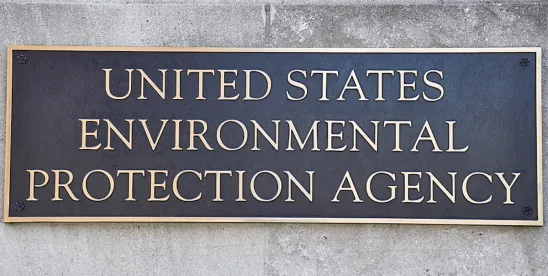Over the past six years, federal and State lawmakers have done much to promote carbon capture utilization and storage (CCUS) - capturing carbon dioxide from an industrial source or from the air, then transporting it either for use in making new products or for underground disposal. CCUS is considered indispensable for meeting global CO2 emission reduction targets. Moreover, captured CO2 has tremendous potential value.
The promotion has worked: the country went from having only a few parties developing capture and/or storage projects to hundreds. The U.S. Environmental Protection Agency (EPA), which in most States is the issuing agency for Class VI carbon storage permits, has 54 permit applications pending for a total of 150 wells.[i] Louisiana alone, which received approval from the EPA earlier this year for “primacy” to administer the Class VI permitting program within its borders, has another 26 applications pending for 65 wells.[ii] North Dakota and Wyoming, the first and only other two States with primacy, already have issued Class VI permits to seven projects, and have another five applications pending. (North Dakota alone has issued permits for more Class VI projects than the EPA has for the rest of the country).[iii]
What has caused the surge in interest? At the federal level, the main thing is a dramatic increase in the Section 45Q carbon sequestration tax credit. Originally enacted in 2008, the Section 45Q credit initially provided $10/ton for permanent sequestration of CO2 for “use” for enhanced oil or gas recovery (EOR/EGR), and $20/ton for permanent sequestration through “disposal” - i.e., underground storage in formations not intended to produce natural resources. In the Bipartisan Budget Act of 2018, Congress provided for the credit to increase over a period of years to $35/ton for use for EOR/EGR, and $50/ton for disposal. Congress also included a new credit for “utilization” - making products with carbon oxide. Utilization became eligible for a $35/ton credit, subject to a lifecycle analysis. In the Inflation Reduction Act, subject to meeting new labor requirements, the three credits were increased to $60/ton for use and utilization, and $85/ton for disposal.
Congress has done much more to encourage CCUS. In the Energy Act of 2020, Congress included a number of provisions to promote CCUS, some of which had been long-sought:
- Providing for streamlined environmental permitting for CCUS projects (in recognition that quicker permitting would provide quicker environmental benefits)
- Making CCUS projects eligible for private activity bonds, to reduce the cost of borrowing
- Amending preexisting law to make large-scale pilots and commercial demonstration capture projects eligible for federal funding
In the Infrastructure Investment and Jobs Act of 2022, Congress took more action by enacting the Storing CO2 and Lowering Emissions (SCALE) Act, which included the following:
- $2.5 billion funding for demonstration projects
- $1 billion funding for large-scale pilot projects
- $3.5 billion funding for four direct air capture hubs
- A federal financing program to encourage buildout of CO2 pipelines (the Carbon Dioxide Transportation Infrastructure Finance and Innovation Act, or “CIFIA”), with $2.1 billion in funding.
- A FEED program for CO2 transport infrastructure such as pipelines and provided $100 million for the program.
- Substantial additional funding for the EPA and the States to accelerate Class VI primacy applications and Class VI permitting
Notwithstanding all this congressional action, and all the Class VI permit applications that have been filed, why have we only seen one Class VI permit issued by the EPA? Why does it seem that despite industrial interest in pursuing CCUS, things have slowed down somewhat?
Some of the answer is markets. The cost of equipment and services continues to rise, which over time will erode the value of the tax credit. Moreover, supply chain issues are complicating CCUS projects, the same as for other projects.
However, there also are implementation issues within the control of the federal government, some of which may require additional legislation, but others that can be accomplished by the next Administration with a stronger focus on results. They include:
- Quicker approval of State primacy applications. As noted above, only three States have primacy to administer the Class VI permitting program in lieu of the EPA. North Dakota’s application took nearly five years from the time of submission to approval.[iv] Louisiana’s approval took more than two years, but that does not include the time it took for EPA to deem Louisiana’s application to be administratively complete. Texas applied for Class VI primacy nearly two years ago after a lengthy back-and-forth for EPA to determine the application administratively complete. These are States with extensive experience with subsurface regulation whose applications should not entail such delays. The next Administration needs to (a) prioritize primacy approvals, (b) not impose conditions that are outside EPA’s statutory authority, and (c) encourage additional States to apply for primacy.
- Streamline infrastructure permitting. Like any infrastructure, CCUS projects face permitting challenges, especially related to buildout of CO2 pipelines. There is bipartisan support in Congress for streamlining permitting for infrastructure projects, as evidenced most recently in July by the Senate Energy and Natural Resources Committee’s 15-4 bipartisan approval of S. 4753, the Energy Permitting Reform Act. While legislative reforms would help, the most important step might be for the next Administration to set an expectation with permitting agencies that reviews and approvals are to be done thoroughly but quickly, and to hold them to it. Our experience in prior Administrations essentially is that clear, persistent, and supervised expectations work.
- Put the “U” back in CCUS. By far the vast majority of carbon dioxide that has been injected for sequestration in the United States has been for EOR. Nearly all of the current infrastructure for sequestering CO2 in the U.S. links to EOR, presenting immediate opportunity for CO2 storage. While environmental groups oppose EOR along with other fossil fuel production, the reality is that the world will be using fossil fuels for decades to come. As a general matter, EOR is carbon negative (more CO2 is permanently sequestered to produce one barrel of oil than that barrel of oil or its fractions would release if combusted). Accelerating CCUS means emphasizing the “U” – both use, through EOR/EGR, and utilization, for creation of products such as carbonates, plastics and polymers, specialty chemicals, and fertilizers.
- Explain the need for and low risk of CCUS. CCUS is a generally low-risk activity with a robust regulatory structure to protect the public. However, as a relatively unknown industrial activity, the facts about it are susceptible to misinformation and distortion. For example, after a recent incident, EPA issued a statement that “The information that EPA has reviewed does not suggest any threat to drinking water in the area.” Environmental group statements said “the risk to our water remains” and the incident “spotlights the risk . . . if carbon sequestration is not banned through or under the aquifer.” Congress on a bipartisan basis has enacted numerous provisions to encourage CCUS. The next Administration should increase efforts to ensure the public understands how the regulatory structure assures public safety.
[i] Current Class VI Projects under Review at EPA, accessed 10/14/24.
[ii] Class VI Carbon Sequestration Program, accessed 10/14/24.
[iii] Class VI - Geologic Sequestration Wells, Class VI – Wyoming Department of Environmental Quality, accessed 10/14/24.
[iv] Class VI - Geologic Sequestration Wells, accessed 10/14/24.




 />i
/>i
